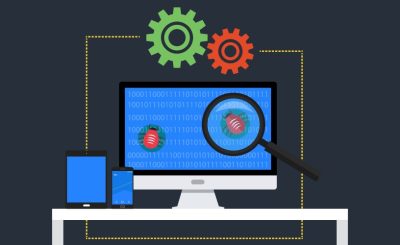Since it was founded in 1997, NetWitness has devoted the past 25 years to establishing itself as a recognized cybersecurity organization that has assisted customers in the process of keeping their data secure in a variety of different ways. This assistance has been provided to customers as a result of the company’s many years of hard work. NetWitness is able to deliver a number of different services, some of which include visibility and transparency, analytics of user activity, and applied threat intelligence. Customers and analysts are kept one step ahead of any cyber threats thanks to these services, which are offered by staying one step ahead of the curve.
This organization offers top-of-the-line security systems that are meant to give you a means to guarantee that your company is secured in every conceivable method. Regardless of the size of your company, you can take advantage of these systems to ensure that your company is protected. Keep reading to learn more about two of the solutions that NetWitness offers and to acquire a better idea of how XDR can shield both you and your data from possible threats.
What is XDR technology and how does it work to protect your business from cyberthreats
XDR technology, which means Extended Detection and Response, is an all-encompassing approach to security that provides an end-to-end perspective of the information technology architecture of your company. This approach to security was developed by XDR, which stands for Extended Detection and Response. It does this by merging many layers of data from a wide variety of sources, such as endpoint agents, network gateways, and cloud apps. This allows it to identify malicious activity across all vectors. Constant monitoring, automated threat detection, and reaction are three of the methods that XDR uses to guarantee that a security breach is found and fixed as quickly as possible, far before the breach has the opportunity to do any damage.
With the consolidation of several data sources into a single integrated platform, XDR technology provides threat analysts with the ability to respond rapidly with relevant insights. In addition to this, it has highly developed analytical skills, which enable threat analysts to get a greater degree of insight into the attack surface. Due to this, companies are able to find previously undisclosed vulnerabilities or suspicious behavior a great deal faster than they could if they depended just on manual techniques. This is a significant advantage over manual approaches.
How XDR helps identify and stop suspicious activities much faster than traditional security measures
Extended Detection and Response, or XDR for short, is an innovative kind of cybersecurity that, in comparison to more conventional security measures, enables businesses to detect and react to potentially malicious activity considerably more quickly. XDR gives customers a unified picture across numerous security systems by correlating data from a variety of sources and notifying them in real-time of any possible dangers that may be present. XDR’s improved visibility across the whole IT stack enables it to spot malicious behavior more rapidly, giving enterprises the opportunity to take preventative measures before a security breach happens. In addition to that, it makes it possible to conduct investigations and report on compliance in a complete manner. In addition, XDR makes it easier to manage security by automating laborious setup procedures and enabling continuous monitoring of the environment. XDR is becoming more popular among firms that are searching for an efficient method to safeguard their data and networks since it assists businesses in maintaining their level of security while also optimizing their use of IT resources.
Implementing XDR across a range of endpoints, networks, and cloud services for comprehensive protection
Extended Detection and Response, or XDR for short, is a potent security solution that, when implemented throughout an organization’s digital infrastructure, allows enterprises to identify, analyze, and react to threats in a timely and efficient manner. Businesses are able to provide themselves with full security against hostile actors by integrating XDR across all of their endpoints, networks, and cloud services. XDR functions by gathering data from a variety of sources, such as network traffic logs and endpoint hardware and software settings, and then aggregating that data into a single, centralized view with the purpose of making analysis more straightforward. Because of this integrated perspective, security teams are able to discover potentially malicious activities, vulnerabilities, or incorrect setups in the environment more rapidly.
In addition, XDR offers capabilities for threat intelligence, which enables enterprises to better comprehend the context of an attack and respond more quickly, preventing any major harm from occurring in the process. As more businesses transfer their operations to the cloud, it is very necessary for those businesses to have an XDR solution that is both safe and dependable in place. With XDR, companies have the peace of mind of knowing that their data and systems are shielded from the hands of hostile actors, which in turn provides their consumers with a risk-free setting.
For the purpose of protecting contemporary digital infrastructure, XDR is an essential instrument. Organizations are able to safeguard their environments from malicious actors by adopting XDR across the spectrum of endpoints, networks, and cloud services. At the same time, they may obtain insights about suspicious behavior, vulnerabilities, and misconfigurations. When XDR is in place, companies have the confidence to shift their activities to the cloud while still maintaining the integrity and dependability of their information technology systems. Since hostile actors are only going to get more sophisticated, XDR will continue to be an essential component in the protection of digital infrastructure.
Benefits of using XDR for increased security with minimal disruption to user experiences
The usage of XDR adds an additional layer of protection while having a minimum impact on the user experience. XDR enables businesses to identify and react to risks that were previously unknown to them, such as those that are the result of malevolent actors or environments that have been improperly configured. In addition to this, XDR makes it possible to conduct investigations of events in a prompt and effective manner, which in turn helps IT teams to respond to issues in a more proactive manner. When XDR is implemented, businesses are able to reduce the number of false positives they experience while simultaneously improving their visibility into the network and application activities occurring across their whole environment. The capacity of an organization to recognize possible security concerns before they become widespread problems is improved as a result of this. In addition, XDR shortens the amount of time it takes to respond to any events that do take place by giving real-time notifications that enable security analysts to analyze suspicious activity in a time frame that is very close to real-time. Because of this, they are able to identify hazards before they do significant harm. Organizations may reap the benefits of greater security while causing only a small amount of disturbance to their users’ experiences by using XDR.
Verifying the effectiveness of your XDR system via metrics and benchmarking tests
It is essential to monitor and evaluate the performance of your XDR system using metrics and benchmarking tests in order to guarantee that it is operating at its highest possible level of efficiency. The effectiveness of your XDR system may be evaluated using a number of different metrics, some of which include detection rates, false positive rates, investigation time, alarm resolution times, and mean time to remediate. In addition to this, it is essential to carry out frequent benchmarking tests in order to evaluate one’s progress in relation to a certain set of objectives. Attack simulations, scan exercises, stress testing, and security audits carried out by third parties may all be included in benchmarking tests. You can ensure that your XDR system continues to be up-to-date and safe even in the face of ever-evolving cyber threats if you perform metrics and benchmarking tests on a regular basis and evaluate the efficacy of your system using XDR.
No matter the programs or security you use, NetWitness is the company to trust. To find out more about their commitment to your organization’s data protection, as well as other products that can reduce harm, stress and danger to sensitive information, head over to www.netwitness.com to learn more.







